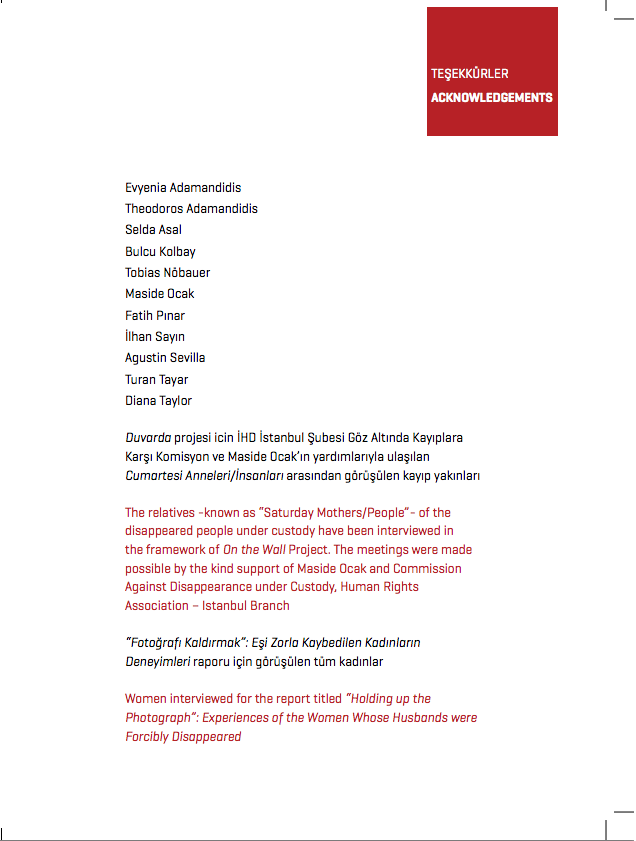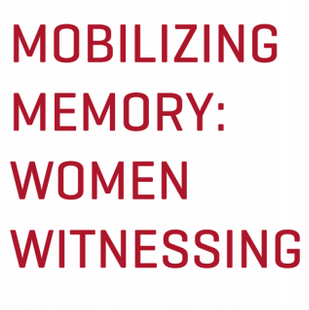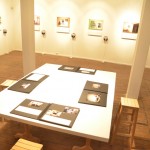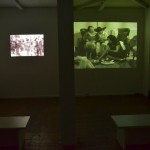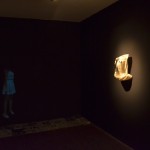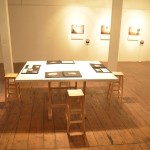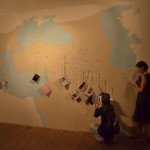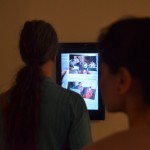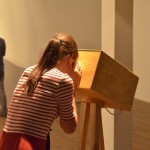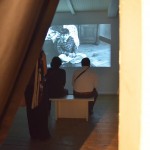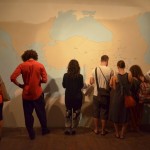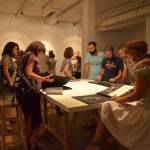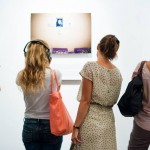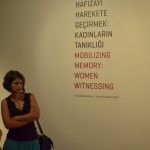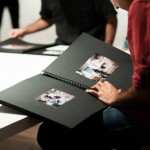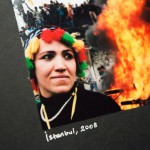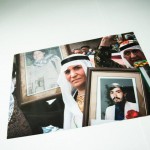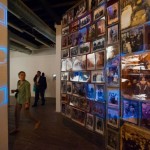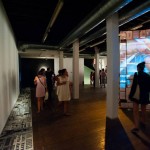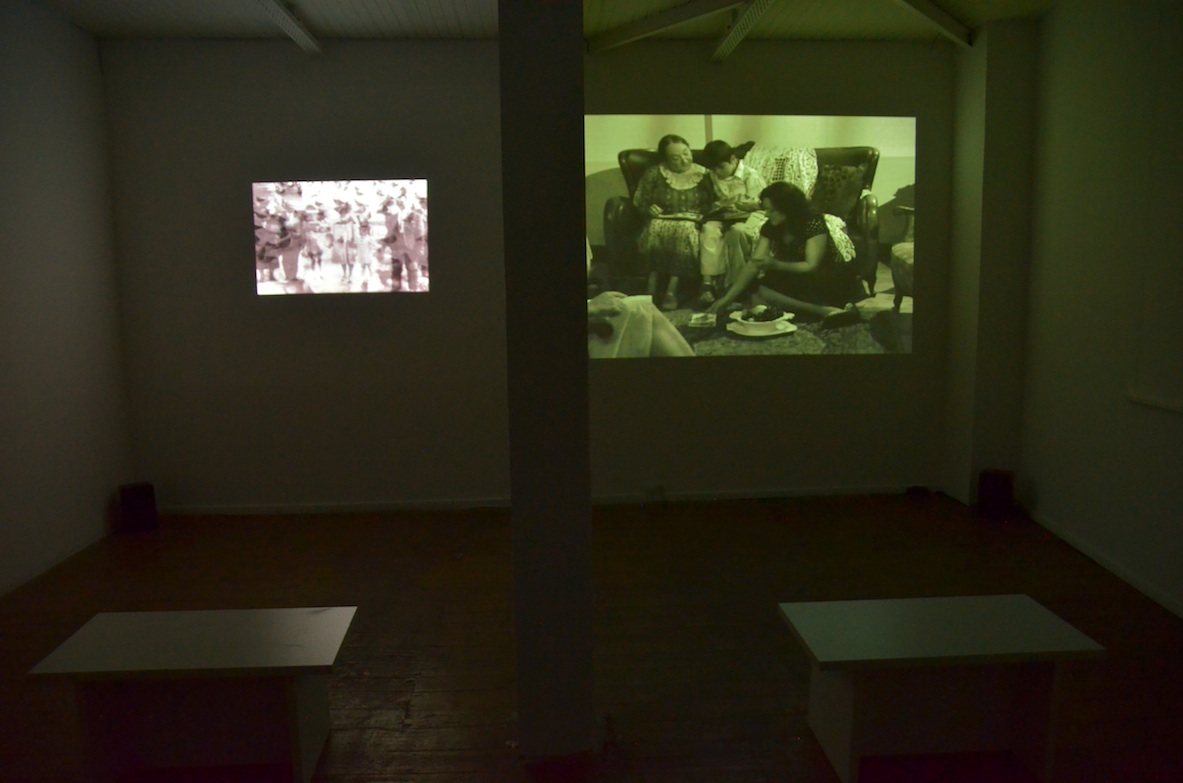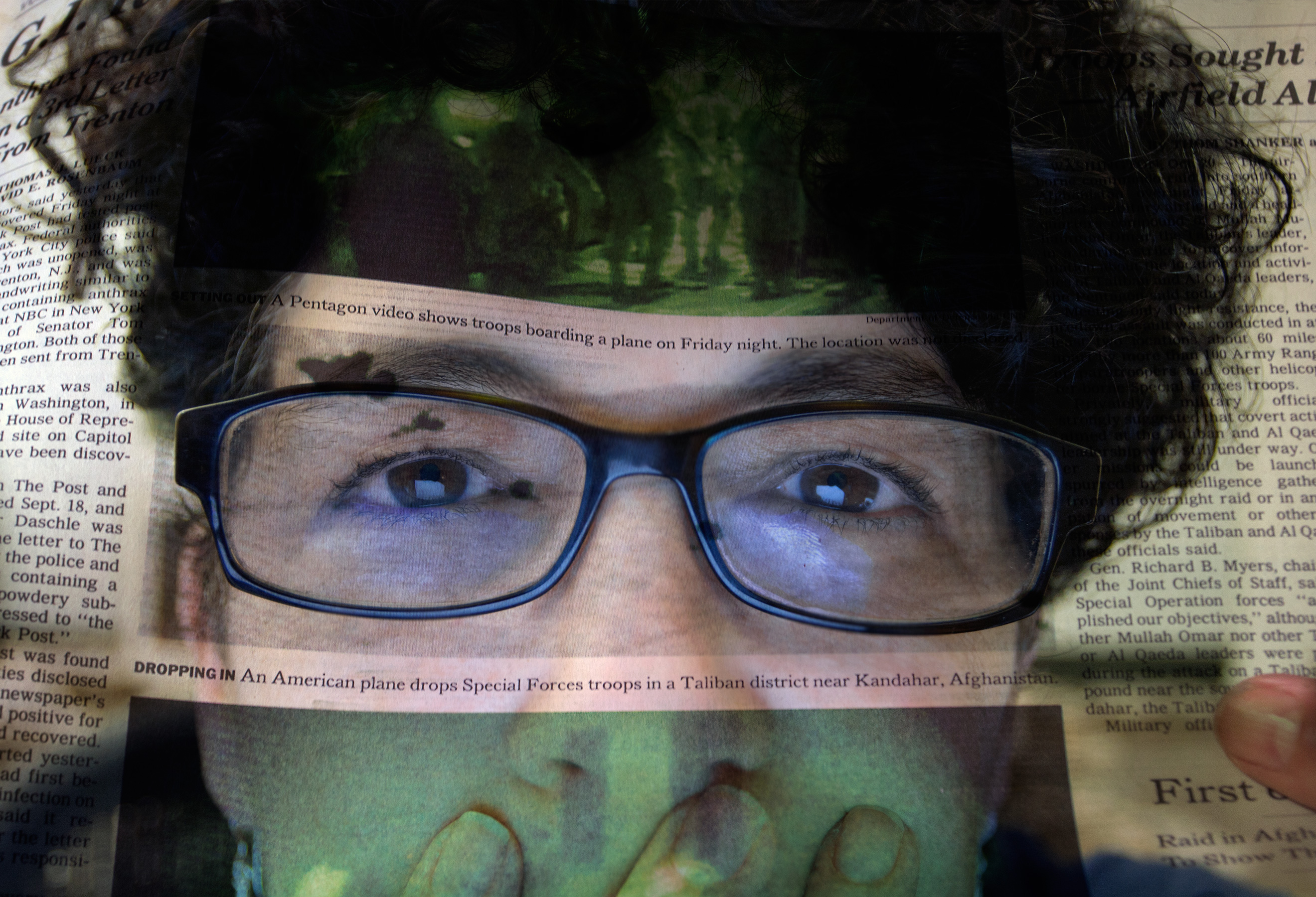MOBILIZING MEMORY: WOMEN WITNESSING
5 SEPTEMBER – 3 OCTOBER, 2014
DEPO ISTANBUL
Artists:
Gülçin Aksoy | Hera Büyüktaşçıyan | Silvina Der-Meguerditchian | Truth Justice Memory Center | Gülsün Karamustafa | Susan Meiselas | Nar Photos (Serra Akcan, Fatma Çelik, Gülşin Ketenci, Aylin Kızıl, Serpil Polat) | Lorie Novak |
Emine Gözde Sevim | Aylin Tekiner
Curators:
Ayşe Gül Altınay, Işın Önol
- Nar Photos
- Aylin Tekiner
- Nar Photos
- Nar Photos
- Emine Gozde Sevim
- Emine Gözde Sevim
- Emine Gözde Sevim
- Gülsün Karamustafa
- Gülcin Aksoy
- Gülcin Aksoy
- Gülcin Aksoy
- Silvina Der-Meguerditchian
- Silvina Der-Meguerditchian
- Nar Photos
- Nar Photos
- Memory Center
- Nar Photos
- Gülsün Karamustafa
- Silvina Der-Meguerditchian
- Susan Meiselas
- Susan Meiselas
- Susan Meiselas
- Susan Meiselas
- Nar Photos
- Silvina Der-Meguerditchian, Families 1 and Families 2
- Pınar Gedikozer Photography
- Pınar Gedikozer Photography
- Pınar Gedikozer Photography
- Pınar Gedikozer Photography
- Pınar Gedikozer Photography
- Pınar Gedikozer Photography
- Pınar Gedikozer Photography
- Pınar Gedikozer Photography
- Pınar Gedikozer Photography
- Pınar Gedikozer Photography
- Pınar Gedikozer Photography
- Pınar Gedikozer Photography
- Pınar Gedikozer Photography
- Pınar Gedikozer Photography
- Pınar Gedikozer Photography
- Pınar Gedikozer Photography
- Pınar Gedikozer Photography
- Pınar Gedikozer Photography
- Pınar Gedikozer Photography
Photographs: Depo Team & Pinar Gediközer
EXHIBITION CATALOGUE & FURTHER IMAGES
EXHIBITION CATALOGUE – PDF
EXHIBITION CATALOGUE – Online at issuu
SOCIAL MEDIA
FACEBOOK: “Mobilizing Memory: Women Witnessing” Event Page
TWITTER: Mobilizing Memory
PRESS:
January 2015, N.PARADOXA: ‘Mobilizing Memory: Interview with Ayse Gül Altinay and Isin Önol’, Katy Deepwell, Volume 35, pp 31-39
September 2014, AGOS: ‘Feminist bir hafıza okuması‘, by Tugba Esen (Turkish)
September 2014, CORNUCOPIA: ‘Gallery Walkabout, Tophane‘ (Turkish)
Women Mobilizing Memory: Unbroken Cameras
“Contemporary history is full of instances in which tellers of factual truth were felt to be more dangerous, and even more hostile, than the real opponents.”[1]
“Every time we witness an injustice and do not act, we train our character to be passive in its presence and thereby eventually lose all ability to defend ourselves and those we love. In a modern economy it is impossible to seal oneself off from injustice.“[2]
The surveillance device was broken on that particular day; it did not record, nor save any of the data that would show the violent incident that happened in front of its mechanical eye. The only remaining witnesses are human, who are “biased”, “emotional”, and whose accounts cannot be considered as “facts”.
How many humans’ witnessing would be equal to one properly working camera? If my words are not sufficient proof of the “facts,” can anyone stop me from remembering what I experienced? Will I forget my brother, who was killed by our own state, and continue living and performing citizenship as if he never existed? What am I to do if I know that my sister was systematically raped by a group of soldiers, which drove her to suicide? Or if I am one of the soldiers who watched it happen? If I stay quiet, will I be taking part in the crime, and becoming an accomplice myself?
How long can one sustain the strength, reporting over and over again what once has happened? Nobody seems to take notice of that mother, who holds up the portrait of her son, every Saturday, on the street corner. She is keeping his room ready, as if he would come back anytime. Even the saddest truth about his fate would be a relief. It may seem that she lost her mind; but in fact she has not lost her memory, and it is all that is left. The evil has become banal, as Arendt once pointed out, violence is omnipresent. Her stubborn act of “bearing witness” is the strongest form of resistance. And where do we stand in relation to her act of bearing witness? If we don’t listen to the witnesses, become their witnesses; if we don’t share their heavy burden of witnessing, do we collectively become one large broken camera?
The artists who come together in the exhibition Mobilizing Memory: Women Witnessing refuse to do so. They blow life into the broken cameras, not only to mechanically record, but to interact, touch, and accept being transformed by the act of witnessing. How do women mobilize memories to witness unbearable acts of violence, from genocide to occupation, from forced disappearances to the daily acts of being “brought into line”? How do they organize, analyse, cope? How do women and artists- both often “blamed” as being emotional, hysterical, unrealistic – turn the mobilizing of memories into a mode of resistance? How do they make the future from their act of witnessing? How do we all relate to their making of an alternative future?
While some of the artists featured in the exhibition respond to the events that they had to witness first hand, others construct direct connections with other witnesses. Some artists reflect on what was provided by the media, while others try to be the media themselves, working through multiple layers of memory to provide multiple visions.
In the work Anonymous, the trauma of a fourteen years old anonymous girl is embodied by a sack that was slipped over her head. She left her childhood in that sack, yet she was only one of thousands who encountered violence and fear throughout and after the 1980 military coup in Turkey. Considering the heavier traumas taking place around her, the anonymous teen is in the position of having to disregard her own pain. The only witnesses of that moment, which remains frozen in her life-long memories, were her torturers, who would doubtlessly claim that it never happened, and there are no traces that would prove what happened. The newspapers of that time mention the numbers of people killed everyday, but not their names. They remain anonymous, while even their families cannot prove that they are missing. Referring to the recent history of Turkey, the work depicts how a society learns that it is worthless in the eyes of its own state. With Anonymous, Gülçin Aksoy reminds us of the ways in which a state’s national fantasies can become more valuable than the will of its people, and how, when that happens, the forces of the nation will be used against its citizens in an unimaginably cruel way…
Red Line provides a possibility to observe a little girl, as she becomes a semi-volunteering model for her father’s video shoot. The father’s insistent will to capture the cuteness of the daughter is visible in the video. While we watch the little girl suffering to look nice enough, trying hard to fulfil her father’s vision, we indirectly get to know the father as a member of the upper middle class, who was able to afford a good film camera in the sixties in Istanbul. He records his nicely dressed up girl on Taksim Square, a space that had witnessed, and was to witness, extraordinary acts of violence, pain and resistance. With her well-behaved manners, she follows the orders, staying within the given lines, which are to shape her identity. By publishing the found footage, that shows this peaceful moment, excerpted from private family archives, the artist, Hera Büyüktaşçıyan, mobilizes its inevitably non-peaceful connotations, as well as drawing attention to the ruptures and continuities between public and private memory. Her grandfather Theodoros Adamandidis recorded the video in 1962, not long after the violent September events orchestrated by the state that took place in Istanbul on 6-7 September 1955. On these memorable days, fascist groups attacked minorities, mainly the Greek community, of which her grandfather was a member. With no sound or manipulation, the video speaks loudly about larger concepts such as identity, class, gender, ethnicity, and urban memory.
The recollection of memories that are brought together by Silvina Der-Meguerditchian’s works Families 1 and Families 2, bring back together divided families, neighbours, and other beloved ones, that were separated when Armenians across Anatolia were either massacred in 1915 or ended up dispersed around the world as a diaspora of survivors. The works consist of photographs that are stitched to each other to re-assemble a lost presence, lost union, lost lives, and a lost Anatolia. The photos weave together an Anatolian carpet out of the photos of Armenian families who were dispossessed of their homes and homeland in 1915. The video of the performance Crochet for Memoryprojected on the backsides of the photographs shows a ritual that is intended to reminisce and mobilize this memory from the personal to the public sphere. The video reminds us that memory is a living, dynamic mechanism, that cannot be controlled with prohibitions, lies, or suppression. The weaving together of photographs as memories and memory objects is done in the present, by those who attempt to challenge these memories to be mobilized and to collectively bear witness through an act of collective labour to past atrocities.
- Texture of Absence is another installation, consisting of a ball of wool and a performance video by Silvina Der-Meguerditchian.It was produced along with an installation entitled Emptied Words, which aimed at rendering the resistance of language. The performance, that was produced in 2010, within the framework of the memorial of Hrant Dink[3], makes references to certain Turkish words that the artist learnt in her childhood, only hearing from her grandparents and parents, without knowing their meanings. The words would be common idioms, or names of everyday objects, that were used habitually and intuitively in family, and the children would know their meanings only sensually. Based on this experience of having a language and traces of a culture being very absent and present, very familiar and alien simultaneously in her life, Der-Meguerditchian interrogates the repression over the family’s own language.
- Voice-Over functions as an interactive online and offline platform inviting the audience to create their own narratives by selecting and arranging photographs from a predefined set, and to provide a short abstract for the resulting story. The artist, Emine Gözde Sevim, produced the 75 photographs, from which the audience can choose, in Palestine-Israel in 2010. To track the participant demographics, the users are asked to provide basic information about themselves and add their own version of a contact sheet to the collective archive. The platform is available for editing by Arabic, Hebrew, Turkish and English speakers and in an English translation for viewing by an international audience. By tackling one of the most contested sites of political violence in this region (and beyond) with such an approach, and with a platform that will outlive the physical installation at DEPO during the exhibition, the artist aims to expose the mutual complexity of (visual) storytelling and of the dynamic (re)writing of history. The work underlines the power of images and the new meaning they gain (through specific arrangements) in the creation of a visual narrative, emphasizing the subjectivity of the process by which we create our own memory of a given subject matter, and the role the media, also through (photo)journalism, plays in this creation.
Memory of a Square is a double channel video project that continuously correlates private and public space, showing two screens simultaneously: while one of them shows an interior space with a family, following a constructed narration, the other shows footage from Taksim Square in Istanbul. Since its construction, the square witnessed many mass killings, conflicts, demonstrations, celebrations, and acts of resistance. The documentary material show an intensive period between the ‘30s and late ‘80s and covers the major events related to the square: The opening ceremony of the central “Monument” in 1930; the events of 6-7 September 1955, during which Jewish, Armenian and Greek minorities were attacked brutally; a military coup which led to the execution of the prime minister and two ministers on 27 May 1960; “Bloody Sunday,” a fundamentalist Islamic riot which was taken as a reason for a second military coup in 12 March 1971; and the May Day celebrations during which more than 30 people were killed on 1May 1977, leading to the third military coup on 12 September 1980. Additional footage shows the demolition of the Tarlabaşı district, in order to open up a grand boulevard between Unkapanı Bridge and Taksim by pulling down two century old significant apartment buildings on the square. Gülsün Karamustafa uses neither audio nor written reference to any of these events. The artist leaves it up to the audience to make the connections, as the events have no dramatic difference from a great number of stories from other countries. By creating a narration and juxtaposing it with documentaries, Karamustafa contrasts the notions of directness and directedness, as well as media oriented histories and personal views on histories. When a family member gets injured from the violent demonstrations, the documentary footage and the romantic aesthetics of the narrated movie intersect. Thus, the work poses disturbing questions about our own encounters with, and memories of, the violent events that are constantly surrounding us.
Holding Up the Photograph gives the possibility for the audience to lend an ear to the intimate, detailed and gendered narratives of the women, whose husbands were forcibly disappeared. Truth Justice Memory Centre builds a three channel video installation, almost surrounding the audience, showing strong expressions of devastating and unheard memories by the wives of disappeared people. The work gives a silenced account on the history of enforced disappearances, based on the experiences of the relatives, who decisively continue their struggle as a collective force, coming together every Saturday, holding up a framed portrait picture of their missing-significant-other, inquiring about their aftermath.
AKA Kurdistan is originally a web-based project that was founded by Susan Meiselas, in the mid-nineties in order to create a borderless space for exchange and provide an opportunity to build a collective memory with people who have no national archive. The website, which provides a timeline of tragic events from the early 1900s up until today, was attacked/hacked many times, and has been censored until recently by the Turkish authorities – which itself bears witness to the on-going suppression of Kurds and Kurdish memory today. The work shown in the exhibition consists of the unofficial political map of Kurdistan with booklets hanging from threads pinned to the map. The booklets contain heavily loaded images sent by people living all around the world, and their correspondences with the artist, telling about their memories of violence in the region, that they had to experience.
Remaining Memories compiles photographs by the collective Nar Photos, the members of which try to attend all the significant activist events and capture moments of celebration, demonstration, and resistance in order to construct a visual collective memory. On one hand, we see heavily loaded images concerning current events and debates mainly in Turkey. But on the other hand, the images become ordinary, if not banal, due to the omnipresence of similarly charged and depressing events elsewhere. Deviating from their usual practice of documenting politically loaded images on a wall or screen, Nar Photos install an archive room for the compiled photographs, to give the audience a space to go through them carefully, read the narrations and the information provided about each image.
Random Interference by Lorie Novak draws from her 15-year collection of approximately 5,500 New York Times news sections as well as photographs grabbed from the Internet. The images are not any different from the images that we are confronted with every day in many other newspapers, which makes looking at the work simultaneously difficult and almost annoyingly familiar. Novak uses a computer based randomizing system to generate pairs of images. In that way she twists the urge to turn away from the images, and asks the viewer to construct connections between events. This makes one realise in a deeper sense that even if the violent events are not directly related to each other, they are still correlated in deeper, underlying logics. The main witnesses to the events shown in the newspapers are the journalists who report the events and capture the image. As readers, we are secondary witnesses to the event, which is multiply mediated. Novak takes a position between the audience and the media images, introducing one more, deliberate effect of alienation, while reminding us of the overwhelming and enduring nature of violence. During the course of the exhibition, Novak will be adding images to a sequence drawn from news sources in Turkey as well as significant world events from the international media.
On the Wall is a photography and sound installation by Aylin Tekiner which traces expressions of the complexity of legitimate emotions – hope, longing, mourning, sadness, anger – of the relatives of the people who disappeared under custody. These relatives – mainly mothers, often remembered as the Saturday Mothers – go to Galatasaray Square in Istanbul every Saturday to hold up the portrait pictures of their beloved missing ones. -This act is also portrayed in the work Holding up the Photograph.- Meeting altogether at the square, gives the mothers strength to carry on with their lives, and they repeat it every single week, until they finally find the “price” (bedel) that has been paid – a word they prefer, instead of the one for body (beden). This collective act keeps their demand sustainable on political basis. The photographs of the missing are hung so high that the missing person, who – most probably – paid the ultimate price, is closer to the sky than the ground. This act does not only exalt the missing person, but also the political struggle that is carried on. The audience is left standing in front of these images and listens to the voices of the relatives, telling the stories of their missing loved ones.
The works compiled in the exhibition are doubtlessly only a few examples of artistic interventions into gendered memories of state violence and the resistance against it. It attempts to be one of the many other memory capsules of a greater mobilized force, consisting of self-organized collections of local histories. States will obviously continue attempting to suppress public opinion, by using their armed forces, secret services, and control over the economy, as they don’t want to be reminded of their guilty acts or lose their hegemony. Mobilized memories, on the other hand, construct a substantial knowledge that can activate and enhance a collective resistance, that widens the hope for a sustainable, peaceful co-existence.
Isin Önol
[1]Hannah Arendt, Truth and Politics, in: The New Yorker (43), 25 Feb 1967, pp 49-88
[2]Julian Assange, Witnessing, Wed 03 Jan 2007,http://web.archive.org/web/20071020051936/http://iq.org
[3]Hrant Dink memorial workshop: Silenced but Resilient: Language and Memory in Anatolia and Neighboring Regions, Organized by the Sabancı University in collaboration with Anadolu Kültür, May 27-29, 2010
LIST OF WORKS AT THE EXHIBITION
- Gülçin Aksoy, Anonymous, Installation, 2014
- Hera Büyüktaşçıyan, Red Line, Video installation, 2014
- Silvina Der-Meguerditchian, Families 1 and Families 2, Laminated digital print and wool, 2013
- Silvina Der-Meguerditchian, Crochet for Memory, Performance documentation, 3’20’’, 2013
- Silvina Der-Meguerditchian, The Texture of Absence, Video: 15’40’’ (Performance that took place in the frame of the Hrant Dink Conference in 2010), Ball of wool, paper, 2012
- Emine Gözde Sevim, Voice-over, Interactive computer based application, 2014, Web project: www.voiceoverproject.org
- Gülsün Karamustafa, Memory of a Square, Double channel video, 2005
- Truth Justice Memory Center, “Holding up the Photograph”,HD Video, 2014 Content preparation: Hatice Bozkurt, Özgür Sevgi Göral, Özlem Kaya Video edit: Burcu Kolbay, Lara Güney
- Susan Meiselas, AKA Kurdistan, Map painted on wall and 17 booklets with rings and chains Turkish translation of the booklets : Gülin Ekinci) Web project: http://www.susanmeiselas.com/akakurdistan/ 1997-2014
- Nar Photos (Serra Akcan, Fatma Çelik, Gülşin Ketenci, Aylin Kızıl, Serpil Polat) Remaining Memories, Installation, photographs, photograph albums, 2005-2014
- Lorie Novak, Random Interference, Computer-driven randomized image sequence, 2012-14 Web project: www.randominteference.net
- Aylin Tekiner, On the Wall, Photography and audio installation, 2014 Photos: Fatih Pınar
ARTIST BIOGRAPHIES
Gülçin Aksoy Born in 1965 in Samsun. Graduated from the Samsun Ondokuz Mayıs University, Department of Painting in 1986. She completed postgraduate degrees in art at Mimar Sinan University. Since 1993 she has managed the Tapestry Studio at Mimar Sinan Fine Arts University, Faculty of Fine Arts, and has been on the teaching staff of the Painting Department. Working without separating her artistic practice from her identity as an educator, her stance is that learning and producing go together. In addition to several collective works, she has had solo exhibitions in both Istanbul and Munich. Between 2006-13 together with two friends she ran Atılkunst Collective.
Hera Büyüktaşçıyan Hera Büyüktaşçıyan (b. 1984, Istanbul) is an artist based in Istanbul. She graduated from Marmara University, Faculty of Fine Arts, Department of Painting (2006). The artist uses the notion of the “other” and combines it with the concepts of absence and invisibility. She explores this notion by composing imaginary connections to identity, memory, space, and time. Her works inquire into the meaning of “absence” within the collective memory. She focuses on how urban transformation causes total disappearance, isolation, and otherness within the framework of communities, history, time, space, and memory. She has participated in a number of Artist in Residence programs: ACSL (2011, Yerevan); PiST///Interdisciplinary Project Space (2012, Istanbul); AIR DROP (2012, Stockholm); Villa Waldberta (2012-13, Munich). Selected exhibitions she has participated in include: Worthy Hearts (2011, Yerevan); The Afternoon Odyssey (2012, SALT); Looking for Somewhere to Land (2012, Stockholm); Reflecting on Reflection (2012, Galeri Mana); BLUR (2012, Weltraum, Munich); Envy, Enmity, Embarrassment (2013, ARTER); IN SITU (2013, PiST///); and The Land Across the Blind (2014, Galeri Mana).
Silvina Der-Meguerditchian Lives and works in Berlin. The artist is the granddaughter of Armenian immigrants to Argentina and was born in Buenos Aires in 1967. Since 1988 she has lived in Berlin. Her artistic work deals with issues related to the burden of national identity, memory, the role of minorities in the society and the potential of a space “in between”. Her work uses a very heterogeneous language (installation, video, sound installation, rugs). She is the initiator of the platform for Armenian artists and curator of “UnderConstruction” (www.underconstructionhome.net), the first representation of the Armenian Diaspora at the 52nd Venice Biennial and “Voulu/obligé, Outskirts of a small contradiction” in the official program of the 53rd Venice Biennial. Since 2010 she has worked as artistic director of Houshamadyan (www.houshamadyan.org), a project which reconstructs Ottoman Armenian town and village life. She works closely with the ballhausnaunynstrasse theater, the Gorki Theater (Berlin) and Anadolu Kultur. She is currently a fellow at Kulturakademie Tarabya in Istanbul, a residency program of the German Foreign Ministry.
Truth Justice Memory Center As an independent human rights organization based in Istanbul, Truth Justice Memory Center was established in November, 2011 with the aim of contributing to the uncovering of grave human rights violations at times of conflict and under authoritarian regimes, the strengthening of collective memory about those violations, and supporting survivors in their pursuit of justice with the perspective of transitional justice. Currently the Center’s main area of work is enforced disappearances. Unspoken Truth: Enforced Disappearances, Enforced Disappearances and the Conduct of Judiciary, “Holding up the Photograph” Experiences of the Women Whose Husbands were Forcibly Disappeared, Impunity Problem: Investigation Process are the publications about the recent studies. Besides, collected information about the enforced disappearance cases are being archived at an online database www.zorlakaybedilenler.org. Video records exhibited are edited from the interviews that formed the basis for the report titled “Holding up the Photograph”, which focuses on the experiences of the women, whose husbands were forcibly disappeared.
Gülsün Karamustafa Gülsün Karamustafa was born in Ankara. She graduated from the Istanbul State Fine Arts Academy. She lives and works in Istanbul. She participated in the 2nd, 3rd and 4th International Istanbul Biennials, the 3rd Gwangju, 8th Havana, 3rd Cetinje, 1st Seville, 11th Cairo and 3rd Singapore, 1st Kiev, 4th Thessaloniki, 10th Gwangju, and 31st Sao Paulo Biennales. She opened solo exhibitions in Paris, Geneva, Montréal, Munich, Helsingborg, Milan, Torino, Rotterdam and Kassel, Bonn, Salzburg, Vienna, and Stuttgart, among others. She has taken part in exhibitions across Germany, including in Berlin, Bonn, Wiesbaden, Karlsruhe, Stuttgart, Cologne, Hanover, and Munich; and in cities across the world, including Copenhagen, Eindhoven, Amiens, Graz, Geneva, Genoa, Belgrade, Sarajevo, Zurich, Vienna, New York, Minneapolis and Taipei. Her works are included in the collections of the Musée d’Art Moderne de la Ville de Paris; MUMOK, Museum Moderner Kunst Stiftung Ludwig Wien; Tate Modern, London; Essl Museum, Klosterneuburg, Proje 4L Elgiz Modern Art Museum; Istanbul Modern; Van Abbe Museum, Eindhoven; and the Museum of Contemporary Art Chicago.
Susan Meiselas Susan Meiselas is a documentary photographer who lives and works in New York. She is the author of Carnival Strippers (1976), Nicaragua (1981), Kurdistan: In the Shadow of History (1997), Pandora’s Box (2001), and Encounters with the Dani (2003). She has co-edited two published collections: El Salvador, Work of 30 Photographers (1983) and Chile from Within (1990), rereleased as an e-book in 2011, and also co-directed two films: Living at Risk (1985) and Pictures from a Revolution (1991) with Richard P. Rogers and Alfred Guzzetti. Meiselas is well known for her documentation of human rights issues in Latin America. Her photographs are included in American and international collections. In 1992 she was made a MacArthur Fellow.
Nar Photos Nar Photos is an independent collective established in 2003 by photographers for whom documentary photography is a visual tool of “understanding and expressing” the world. Its aim is to show the diverse conditions of human life. In a time when producing together, sharing knowledge, support and collectivism have become the exception to the norm, the process of creating these projects as a collective is as important to the group as the final result. Members produce photo reportages with the idea of trying to change the current situation instead of accepting and protecting the existing circumstances.
- Serra Akcan B. 1974, Istanbul. From 1997 to 1999 she attended the Professional Photography Program at the New England School of Photography in Boston. She currently works as a freelance photographer in Istanbul and has been producing documentary projects since 1999.
- Fatma Çelik B. 1987, Diyarbakır. She graduated from the Department of Psychological Counseling and Guidance at İnönü University. She has worked as a counselor in Diyarbakır since 2009 and began photography in 2010.
- Gülşin Ketenci B. 1975, İzmit. Studied mathematics at the Istanbul Technical University. She began photography in 2004. She also works as a director’s assistant in various documentary film projects.
- Aylin Kızıl B. 1987, Diyarbakır. She graduated from Anadolu University Faculty of Pharmacy and is interested in photography since 2010.
- Serpil Polat B. 1983, Dersim. She graduated from the Education Department of Fırat University in 2004. She works as a teacher in Diyarbakır and started photography in 2010. In 2011, she participated in the World Press Photo Seminar.
Lorie Novak Lorie Novak is an artist and Professor of Photography & Imaging at Tisch School of the Arts, New York University and Associate Faculty at The Hemispheric Institute of Performance and Politics. She has been in numerous exhibitions, and is the recipient of grants and fellowships including residencies at the Rockefeller Foundation’s Bellagio Center (Italy); Bogliasco Foundation, (Italy); ArtSway (England); and Mac Dowell Colony (US). Her photographs are in numerous permanent collections, including the Art Institute of Chicago; Bibliotheque Nationale, Paris; Center for Creative Photography, Tucson, AZ; and Museum of Modern Art, NY. Novak uses various technologies of representation to explore issues of memory and transmission, shifting cultural meanings of photographs, and the relationship between the intimate and the public. Her web project collectedvisions.net, 1996-present, exploring how family photographs shape our memory, was one of the earliest interactive storytelling sites. See www.lorienovak.com for more information and details of her many publications.
Emine Gözde Sevim Emine Gözde Sevim (b.1985) is a New York-based, Istanbul-born photographer. Educated at Bard College in New York’s Hudson Valley, Sevim has dedicated the last seven years to exploring and documenting the changing face of life in the Middle East. Her most recently completed body of work focuses on everyday life in Egypt amidst escalating social unrest. As part of her comprehensive project in the region, Sevim has also documented provincial daily realities in the context of historical transitions in Afghanistan (2007) and Israel and the West Bank (2010). She is represented by the Dubai based gallery East-Wing.
Aylin Tekiner B. 1978, Nevşehir, Turkey. She is an artist and activist based in New York and Istanbul. She undertook her B.A. and M.A. at Hacettepe University, Faculty of Fine Arts, Sculpture Department in Ankara, Turkey. In 2008 she received her Ph.D. at Ankara University, Institute of Educational Sciences, Cultural Fundamentals of Education Department. Her book, Ataturk Statues: Cult, Aesthetics, and Politics, evolved from her dissertation and was published by İletişim Yayınları (Turkey) in 2010. She has had solo shows and participated in the group exhibitions in Turkey and New York. She taught New Media, Art, and Activism at Long Island University, New York. She is a member of the Collective Memory Platform, which was formed by the families of 28 victims of the political murders in modern Turkey.

